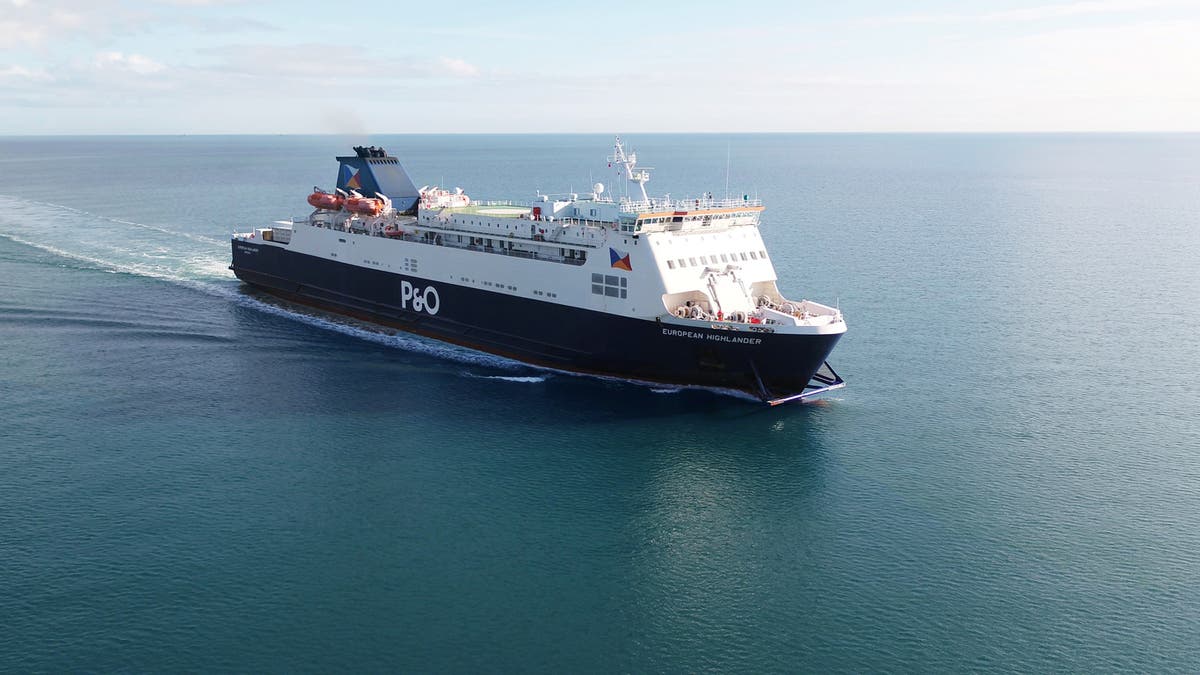Why you should visit St Helena, home to the 'world's most useless airport'
'Hikers and old people' have traditionally visited St Helena, but the island's first airport is opening it up to a new type of traveller

Sign up to Simon Calder’s free travel email for weekly expert advice and money-saving discounts
Get Simon Calder’s Travel email
So you want to go to St Helena.
Why? Maybe you want bragging rights about the notorious flight in. Maybe you’re a hiker, keen to walk the island’s daredevil mountain trails. Maybe you’re a Napoleon nut, desperate to pay your respects to Monsieur Bonaparte at the house in which he died.
Or maybe you’ve always been fascinated by a tiny island in the middle of the Atlantic Ocean – 1,200 miles west of Angola, and 2,500 east of Rio de Janeiro – where you’ll find a picture of the Queen in many a room you walk into, where the most famous resident is a 185-year-old giant tortoise, and where life seems to go on quite happily without big-name shops, any kind of rat race, or a selfie culture (the internet only arrived in 2015 and it still costs a bomb).
“Hikers and old people” are your typical tourists on St Helena – at least, they were before the airport opened, according to one official I spoke to. That doesn’t mean there’s nothing for anyone else to do; it’s more a reflection of life before the airport. To get to St Helena – a British Overseas Territory – from Britain, you needed to fly to Cape Town (which often means flying via Johannesburg), then get a boat, the RMS St Helena, to the island. The journey across the Atlantic took five-to-six days, and because of the weather, it was advisable to leave a couple of days either side, in case of delays. That meant eating up two weeks of annual leave just to get there. No wonder most people who visited were retired – or hikers so hardcore that they were prepared to throw all their holiday allowance at it.
But hikers and OAPs do not a burgeoning tourist industry make, and tourism is just what St Helena needs – not just to shrug off the UK government funding that currently props it up, but also to allow the islanders (4,370 of them, called Saints) to start new businesses. The average annual income here is £7,100 (making the new flights – which start at £804 return to Johannesburg – completely unattainable for many residents). If tourism takes off, it could change lives.
So is it worth making the trip if you’re not a hardcore walker or history buff, and are merely intrigued by the idea of this 47-square-mile island plopped in the middle of the 41 million-square-mile Atlantic?
Having spent a week there, I can say, absolutely. Here’s what’s on offer.
Dolphins and whale sharks
I’ve dolphin-watched before. I have beautiful memories of a trip in a RIB boat from San Diego, going south into Mexican waters to find a pod of about eight dolphins.
Or rather, I should say, had beautiful memories, because my San Diego trip was wiped off the map by the two hours I spent with Anthony Thomas of Sub-Tropic Adventures. On his “marine life cruise” – the boat driven by his son, the island narrated by Anthony, we saw St Helena from the water – its dark brown cliffs thrusting up from the bottom of the ocean (this is actually a volcanic island, and what’s above the water is just the tip, the rest of it spiralling down to the ocean bed), looking as forbidding as it must have to Napoleon, who famously remained silent when he first clapped eyes on it.
What to do on St Helena
Show all 14We saw plenty of bird life – brown and black noddies, red-billed tropicbirds, masked boobies, Madeiran storm petrels – as well as guano-soaked rocks studded with cannons and fortresses (relics of St Helena’s well-fortified past).
But what I’ll never forget was the pod of dolphins flitting and flipping around the boat – swimming with us, around us, somersaulting in the distance as if to encourage us on. A big pod. Very big. How many, I asked Anthony. “Oh, about five or six… hundred,” he said nonchalantly. This, apparently, is normal for St Helena.
What’s more, from December to April (and sometimes a little later), they’re visited by whale sharks – “30 or 40 at a time,” says Anthony. They’re thought to mate and give birth around the island – making this a unique spot on the planet. The dolphins, meanwhile, are visible year-round, and Anthony also does diving. Tours from £25.
Crab and avocado cocktail at Harris’ (Julia Buckley)
Stay-at-home food
St Helena doesn’t aim to be trendy, but its food scene is so retro it’s ahead of the curve – the “dining in someone’s home” phenomenon never went away, here. Consequently, the best meals you have on the island are probably going to be in someone’s house. Ask around locally – Saints are nothing if not helpful – but places I tried, and loved, include Farm Lodge (whose posh five-course meal, served amid antiques, is said to be the best food on the island – £35pp, call 00290 24040 to book), Wellington House (a beautifully retro set-up in a grand old dining room that’s part of Ivy Robinson’s B&B – call 00290 22529 to book) and Harris’ Guest House, overseen by the fabulous lady of the house, Irene Harris (£15, 00290 22729). What’s food on the island like? Pretty retro, at least by London standards – you’ll find nothing nouveau or fancily plated here, and there’s a slight 1980s vibe to dishes like crab and avocado cocktail, bread-stuffed chicken or hunks of gammon. It is, however, delicious. Although you’ll definitely need to book in some gym time once you get home.
St Helena is worth the trip for the landscape alone (Julia Buckley)
Exercise au naturel
Of course, on St Helena, there are no gyms; instead, there are 47 square miles of countryside to explore, at best hilly, at worst lethally mountainous. The island has 21 official “Post Box Walks”, which start at “moderately challenging” and go upwards from there. For the good ones, expect plenty of sheer drops, flax-drenched peaks, dramatic curtains of fog that sweep in and out, and astonishing photo opportunities. It’s best to take a guide, however (walks are rated on a 1-10 scale and locals recommend a guide for anything above a 5) – try the delightful Val Joshua (00290 22235), who leads hikes from £25pp.
Cooking fishcakes at Derek and Linda’s (Julia Buckley)
Cook your own fishcakes
Along with plo (a type of curried risotto), fishcakes are a staple of St Helenian cuisine. They make them slightly differently to those in the UK – using egg to bind them so they’re more even-textured and less flaky (and fishy), and adding chilli (they’re much better than they sound). But why eat a fishcake when you can make a batch? Derek and Linda Richards run the best kind of cooking class (£35pp) at their home restaurant, overlooking the Atlantic in Half Tree Hollow; they’ll hand you a glass of wine, show you how to mince fresh South Atlantic tuna, mix in the other ingredients and then fry them. You then have your fill of them – along with other Saint Helena dishes they made earlier – over dinner, and what’s left is sold at their Sandwich Bar in town the next day. (These guys are at the forefront of a more locally-focused, less Napoleon-and-hiking kind of tourism, so it’s worth checking out what else they can do.)
Napoleon's empty grave is surprisingly moving
(Julia Buckley)
Fall for Napoleon
You may know nothing about Napoleon before you set foot on St Helena, but I defy you not to be fascinated by the man behind the myth who emerges here – a PR guru before his time, who dramatised and choreographed his six-year exile to score political points and stake his claim as a legend. There are three official Napoleonic sites on the island, all owned by the French government: the Briars Pavilion, just above capital Jamestown, where he stayed when he first arrived on St Helena (just one room is open to the public); Longwood House, where he spent his exile dictating his memoirs, moping and taking lots of baths before he died; and his grave (now empty – the French repatriated his body) in an idyllic little bower, wedged into the side of a canyon in between Longwood and Jamestown. The last two, in particular, are worth the visit, though the guide at the Briars is a fount of island knowledge.
Once you’re properly obsessed with Napoleon, Jamestown’s library (the oldest in the southern hemisphere) has reams of books about him – £5 plus a £20 deposit gets you temporary membership. You can also stay in the cottage of one of his aides (see below).
Coffee and booze
The most remote coffee plantation in the world and the most remote distillery in the world. Both sound tempting; and they’re both fascinating. At the St Helena Distillery (established 2006), Brit-born Paul Hickling makes gin, rum, coffee liqueur and brandy from local fruit, as well as tungi – a spirit unlike any other, made from prickly pear (called tungi on the island). This is also the only place on St Helena that takes credit cards. Open every day, but always call ahead to make an appointment.
Meanwhile, Bill and Jill Bolton (also English – they split their time between St Helena and the UK) run the St Helena coffee plantation at Rosemary Gate. The draw of St Helena coffee is more than its remoteness – the Arabica beans (“green tipped Bourbon Arabica”, to be precise) were brought here from Yemen in 1732, and, thanks to the island’s location, have remained pretty much untarnished and unchanged. Tours are by appointment (00290 4371), or if you just want a drink, don’t go to the farm – they also run the Coffee Shop on the seafront in Jamestown (open Wednesday to Saturday).
Napoleon at the Consulate Hotel (Julia Buckley)
Amazing accommodation
Much has been made of the new four-star Mantis hotel in Jamestown; but you don’t come to St Helena to stay in a place with uniformed staff and clocks behind the reception desk listing the time in major world cities. (It’s also worth pointing out that the Mantis is not locally-owned and was part-funded with government money, while locally-owned businesses have to fend for themselves. Overly political? Maybe, but responsible tourism should be high on the agenda during these fast-changing times for the island.)
No, what you want in a place to stay on St Helena is the warm welcome and would-verge-on-the-oppressive-if-they-weren’t-also-laconic friendliness that the Saints are famous for. The obvious place to stay is a family-run B&B or guest house – Jamestown is full of these (Harris’ Guest House and Wellington House for starters). I spent half my week at the Town House B&B in Jamestown – a few minutes’ (easy) walk from the main drag, owned by the gracious Marlene and Colin Yon. It was simple but very comfortable, and the Yons were a delight – super-helpful and caring but never in your face. It’s in a slightly more residential part of town, so I felt more like a local, though I was five minutes’ walk from most of the other tourists. I loved my time here. Doubles from £80, B&B. (00290) 23030.
For more of a traditional hotel feeling, try the Consulate – a gorgeous old property being gradually restored by Hazel Wilmot. Rooms are simple but filled with antiques, and there are plenty of communal areas spinning you back to the past, from antique-filled lounges (“Oh yes, that’s my Napoleon cabinet” said Hazel, pointing to a cabinet stuffed floor-to-ceiling with Napoleon paraphernalia – there’s a lifesize Boney by the bar, too) to the terraces which are filled with locals and tourists come gin-o’clock. Hazel’s a mildly controversial character on the island – being from Botswana, outspoken and female doesn’t endear her to everyone – but the hotel is lovely, if not luxury, and Hazel herself is incredibly kind (when I was having repeated problems with my hire car, she offered to lend me her own – and I’d only popped in for a drink). Doubles from £150, B&B. consulatehotelsainthelena.com
While Jamestown’s where the evening action’s at, Napoleon fans and lovers of the great outdoors should think about staying in Longwood – specifically Bertrand’s Cottage, a three-room upmarket B&B located right across the road from Longwood House, in a cottage that once belonged to Grand Marshal Henri-Gatien Bertrand, Napoleon’s aide-de-camp. It opened in 2016 and the fancy (for St Helena) restaurant trains local youngsters in the art of hospitality. Although it’s posher than other island guesthouses, and doesn’t have that same family feel, manager Sarah Dalton is a delight, and can’t do enough to help her guests. It’s a good cross between St Helena accommodation and what you’d find at home – I spent four nights here and loved the atmosphere – the calm is a good contrast to Jamestown. Doubles from £160, B&B. facebook.com/pg/Bertrandscottage
The landscape is spectacular (Julia Buckley)
Take a road trip
St Helena may be a small island but it packs a big punch when it comes to roads. That’s not necessarily a good thing – nervous drivers won’t be delighted by the fact that the majority of roads include stretches with sheer drops, hairpin turns and quiversome angles, and non-nervous drivers will turn tremulous at the quality of the hire cars. That’s the perfect excuse to take a guided tour of the island – specifically with Robert Peters, who brings St Helena to life with his tales of working in the flax mills (which drove the island economy until 1966), being accosted as a child by “ghosts” (other children) in the fields and a rundown of island nicknames (there are people called “Fridge” and “Stickman” for starters). He’ll also take you to places you wouldn’t otherwise know, whether that’s the area near the airport where the (endemic) wirebirds hang out, or places with names like “Fairyland” and “Broad Bottom”. He is, in short, an octogenarian delight. From £40, 00290 23346.
Jonathan the elderly tortoise (Julia Buckley)
Befriend a 185-year-old tortoise
Or, to be exact, a tortoise estimated to be 185 years old. Jonathan, the oldest resident on St Helena, resides at Plantation House, the St Helena Governor’s official digs. He shares the paddock with three friends: Emma, David and Frederic – or Frederica, as recent reports suggest s/he should actually be called.
Sadly, Saints are adamant that recent reports of Jonathan being gay (he was, supposedly, in a longterm relationship with Fred) are fake news. “He never went after Frederic!!” insists Debbie Stroud, Plantation House’s manager. He prefers Emma, apparently. Either way, tours of the mansion (Tuesdays at 11am, £10) finish in the paddock, where you can get so close to all the tortoises that you can see Jonathan’s age-withered skin and cataract.
Meet the locals
Yes, egregiously stereotyped “friendly locals” are the bane of travel recommendations, but hear me out on this one. Saints are friendly, but not oppressively so. They’ll wave at you religiously if you pass them in the car (this may not seem so unusual to those of us from Cornwall) and say hello in the street, but they won’t crowd you or make you feel like a circus attraction or a bottomless pit of money. It’s fascinating to be somewhere where people speak English but the no-hurry, doors-unlocked atmosphere feels 50 years in the past, compared to everywhere else that speaks English as its first language. That’s not to say it’s all positive – a few people I met seemed a teeny bit… sexist, to speak baldly, although maybe I had run-ins with the wrong chaps.
Landing at St Helena's notorious airport
Show all 12Misogyny aside, though, you need to meet the Saints not just for their chat chops, but also to listen to their absolutely unique accent that takes Australian and South African, adds an Irish brogue and tops with a hint of caterwaul. It’s a truly wondrous thing to hear.
Good luck on the roads
(Julia Buckley)

 Hollif
Hollif 





























